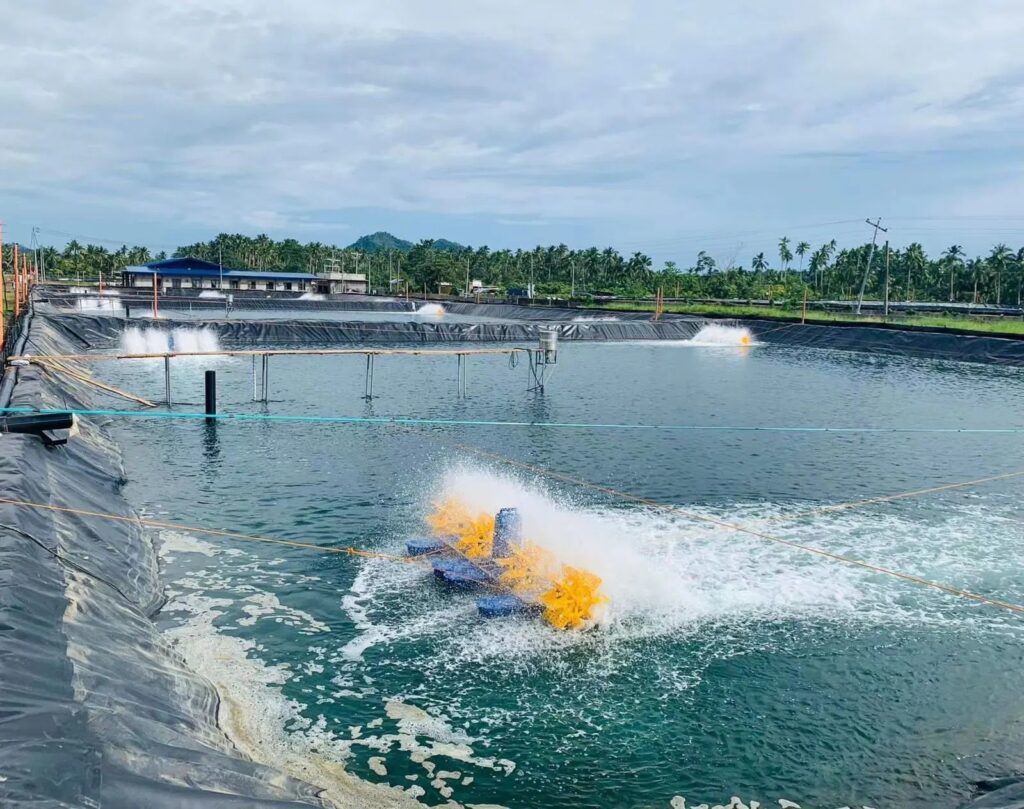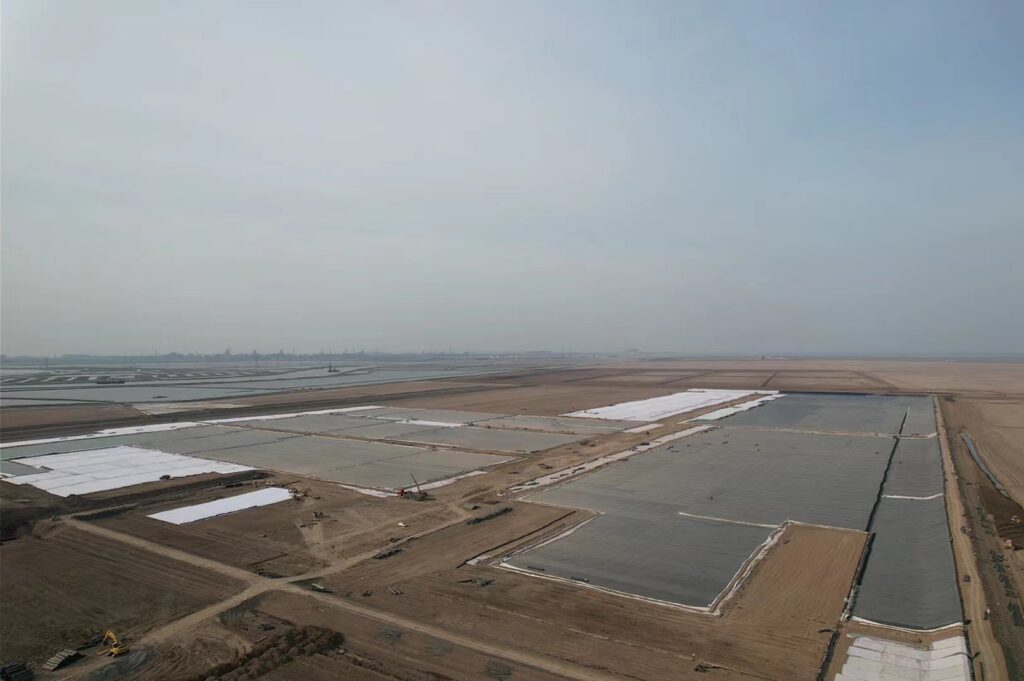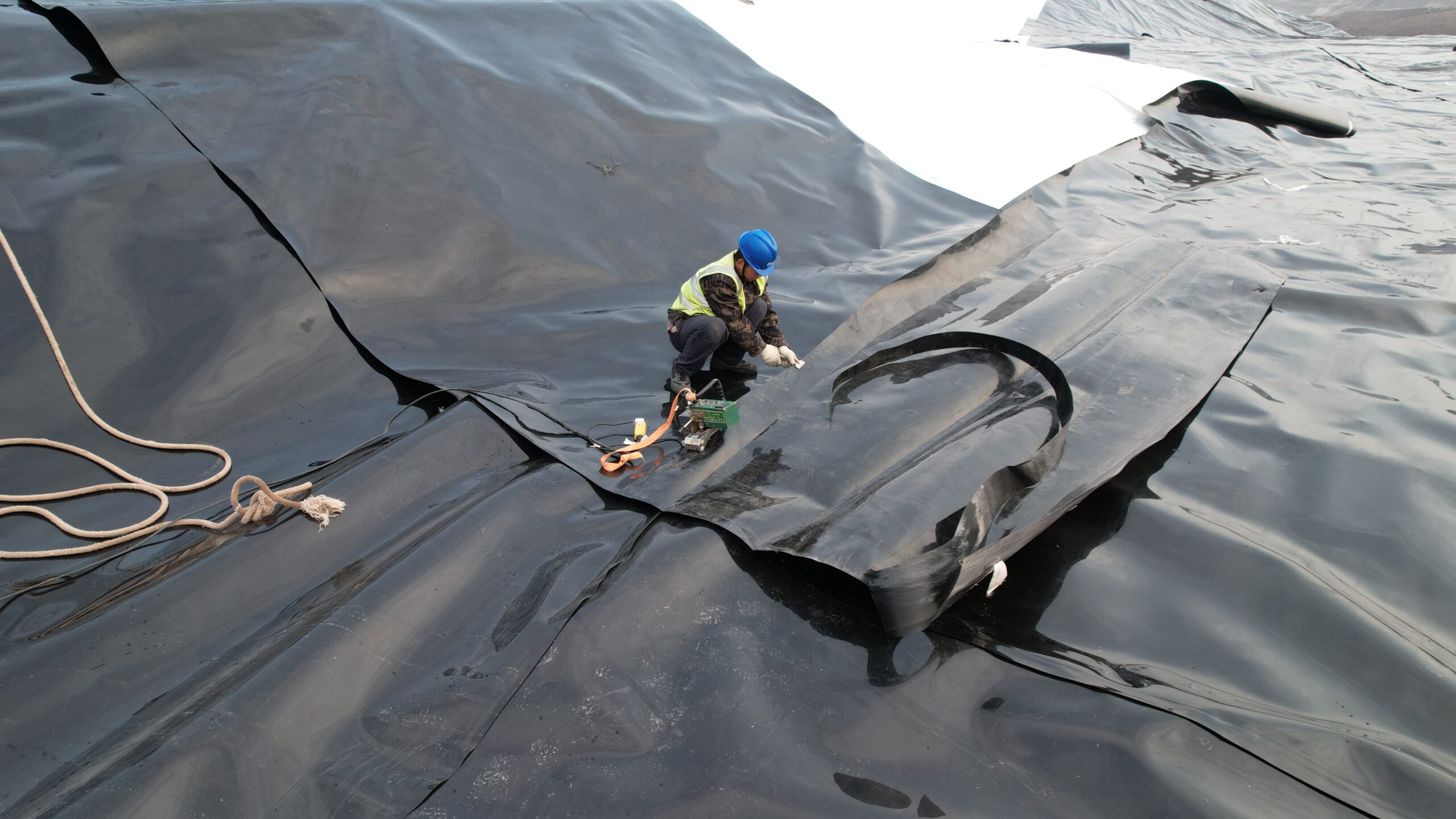What are the application scenarios of geomembrane?
Geomembranes have a wide range of application scenarios due to their versatility and durability. Here are some common uses:
Landfills: Geomembranes are widely used in landfill liners and caps to contain and isolate hazardous waste materials from the surrounding environment, preventing contamination of soil and groundwater.
Water Containment: They are used in various water containment applications such as reservoirs, ponds, canals, and wastewater treatment facilities to prevent seepage and leakage, thus conserving water resources and protecting the environment.
Mining: Geomembranes are employed in mining operations for lining tailings ponds, heap leach pads, and other containment structures to prevent the leaching of potentially harmful chemicals into the surrounding soil and water.
Aquaculture: They are utilized in aquaculture ponds and fish farms to prevent water seepage and provide a stable environment for fish and other aquatic organisms.
Transportation Infrastructure: Geomembranes are used in road and railway construction for slope stabilization, drainage, and erosion control, helping to maintain the integrity of transportation infrastructure.
Environmental Protection: They are used in environmental remediation projects such as capping contaminated sites, covering landfills, and constructing barriers to contain pollutants and prevent their migration into the surrounding environment.
Waterproofing: Geomembranes are employed in waterproofing applications for structures such as tunnels, reservoirs, and underground storage tanks to prevent water ingress and protect the integrity of the infrastructure.
Stormwater Management: They are used in stormwater management systems such as retention ponds, detention basins, and green roofs to control runoff, prevent erosion, and improve water quality.
Agriculture: Geomembranes are used in agriculture for lining irrigation canals, reservoirs, and agricultural ponds to prevent water loss and improve water efficiency in irrigation systems.
Oil and Gas Industry: They are used in the oil and gas industry for lining storage tanks, containment ponds, and secondary containment systems to prevent leaks and spills that could lead to environmental damage.
These are just a few examples of the diverse applications of geomembranes, showcasing their importance in various industries for environmental protection, infrastructure development, and resource management.

How do geomembranes protect seawalls and dams?
Geomembranes play a crucial role in protecting seawalls and dams by providing waterproofing, erosion control, and structural reinforcement. Here’s how they contribute to the protection of these structures:
Waterproofing: Geomembranes act as a barrier to prevent water from seeping through the structure. Seawalls and dams are constantly exposed to the hydraulic pressure of water bodies, and geomembranes help in maintaining the integrity of these structures by effectively waterproofing them. This prevents water infiltration into the foundation soil, which can weaken the structure over time.
Erosion Control: Seawalls and dams are susceptible to erosion caused by wave action, currents, and hydraulic forces. Geomembranes provide a protective layer that resists erosion and helps maintain the stability of the structure’s surface. By preventing soil erosion, geomembranes protect the structural integrity of seawalls and dams and extend their lifespan.
Seepage Control: In addition to preventing water infiltration from the exterior, geomembranes also control seepage from within the structure. Dams, in particular, are designed to retain large volumes of water, and any seepage through the dam structure can compromise its stability. Geomembranes act as a barrier to control seepage, reducing the risk of internal erosion and potential failure of the dam.
Reinforcement: Geomembranes can also provide structural reinforcement to seawalls and dams. They can be installed as part of composite lining systems that include other geosynthetic materials such as geotextiles and geogrids. These composite systems enhance the structural integrity of the seawall or dam, improving its resistance to external forces and increasing its load-bearing capacity.
Environmental Protection: Geomembranes help in protecting the surrounding environment by preventing the release of contaminants from seawalls and dams. For example, dams may contain reservoirs with water used for drinking, irrigation, or recreational purposes. Geomembranes ensure that the water remains clean and free from pollutants by preventing contamination from the dam structure.
Overall, geomembranes play a critical role in safeguarding seawalls and dams against the detrimental effects of water infiltration, erosion, and seepage, thereby enhancing their longevity and performance.

How to install geomembrane on seawall dam?
Installing geomembrane on a seawall or dam requires careful planning, preparation, and execution to ensure proper waterproofing and structural integrity. Here are general steps for installing geomembrane on a seawall or dam:
Site Preparation:
Clean the surface of the seawall or dam to remove any debris, vegetation, or loose materials.
Smooth out any irregularities or rough areas on the surface to ensure proper adhesion of the geomembrane.
Surface Inspection:
Inspect the surface of the seawall or dam for any existing damage, cracks, or defects that may need repair before installation.
Repair and Patching:
Repair any damaged areas on the seawall or dam surface using appropriate repair materials such as concrete patching compounds or mortar.
Ensure that all repairs are properly cured and hardened before proceeding with geomembrane installation.
Geomembrane Selection:
Choose the appropriate type and thickness of geomembrane based on the specific requirements of the project, including factors such as water pressure, chemical resistance, and environmental conditions.
Geomembrane Layout:
Lay out the geomembrane sheets on the surface of the seawall or dam, ensuring that they cover the entire area with sufficient overlap between adjacent sheets.
Trim the geomembrane sheets to fit the contours of the seawall or dam, leaving a sufficient margin for anchoring and sealing.
Anchoring:
Anchor the geomembrane sheets securely to the seawall or dam using mechanical fasteners, such as bolts or anchors, along the perimeter and at regular intervals.
Ensure that the geomembrane is stretched taut and evenly anchored to prevent wrinkles or sagging.
Seaming:
Seam together adjacent geomembrane sheets using appropriate welding techniques, such as hot wedge welding, extrusion welding, or heat sealing.
Ensure that the seams are properly aligned, smooth, and free from defects to maintain waterproof integrity.
Sealing:
Seal the edges and seams of the geomembrane using compatible sealing materials, such as geomembrane tapes, adhesives, or sealant strips.
Apply the sealing materials according to manufacturer specifications, ensuring a watertight seal along the entire perimeter and at all seams.
Quality Control:
Conduct thorough inspections during and after installation to verify the quality of the geomembrane installation, including seam integrity, anchoring, and sealing.
Address any deficiencies or issues promptly to ensure the effectiveness of the geomembrane system.
Backfilling and Protection:
Once the geomembrane is installed and inspected, backfill any excavated areas around the seawall or dam with suitable fill material.
Protect the geomembrane surface from damage during backfilling and subsequent construction activities by placing protective layers, such as geotextiles or cushioning materials, as needed.
By following these steps carefully and adhering to industry best practices, the installation of geomembrane on a seawall or dam can effectively enhance waterproofing, erosion control, and overall performance of the structure.
Recent Posts
Author
-

Founded in 2002, Tinhy's team focuses on the manufacturing, marketing, installation, application and research and development of geosynthetic materials.
View all posts




